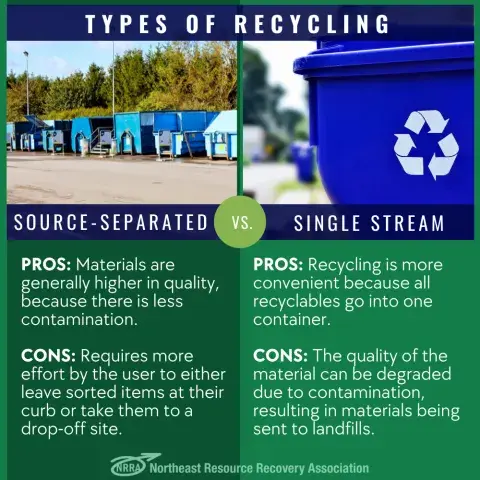
♻️ LET'S TALK TYPES OF RECYCLING: SOURCE-SEPARATED vs SINGLE-STREAM ♻️
Though we talk about recycling every day around here, recycling can look very different from town to town or city to city.
There are 2 main types* of recycling: Source-Separated and Single-Stream
- SOURCE-SEPARATED: residents bring their recyclables to a transfer station or recycling center and separate the materials there. Some source-separated programs have curbside pick-up of already sorted materials.
- SINGLE-STREAM: residents put all of their recycling together into one container that is picked up weekly from the curbside or alley.
There are benefits and costs - pros and cons - to both types.
:) PROS:
- Source-Separated recycled materials are generally higher in quality and value because there is less contamination.
- Single Stream recycling is more convenient because all recyclables go into one container, which can mean increased resident participation.
:( CONS:
- Source-Separated recycling requires more effort by the resident to separate their own materials and bring their recyclables to a drop-off site or to leave them curbside after sorted.
- Single-Stream material quality can be degraded due to contamination, resulting in materials being sent to landfills rather than recycled. This can also be a more expensive option, since it requires additional machinery and labor to separate materials.
✅ Some communities even have a combination of single-stream and source-separated recycling, depending on the materials.
-------
* There is a third type of recycling called "zero sort" where garbage and recyclables are all put into the same container and are separated in a facility. This can be very easy for residents to utilize, but results in high recycling contamination rates.
This material is based upon work supported under a grant by the Rural Utilities Service, United States Department of Agriculture. Any opinions, findings, and conclusions or recommendations expressed in this material are solely the responsibility of the authors and do not necessarily represent the official views of the Rural Utilities Service. Rural Community Assistance Partnership, Inc., is an equal opportunity provider and employer.
